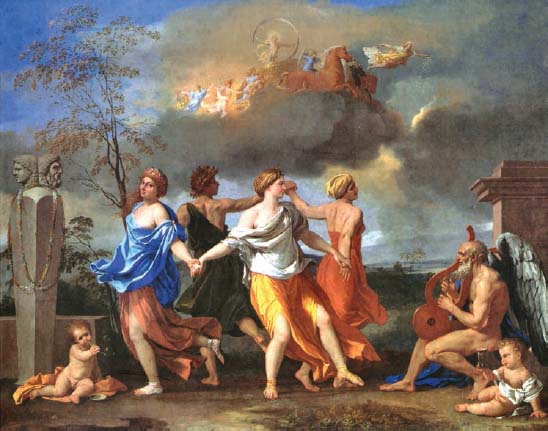Baroque and Beyond C. 1600–1850Baroque Italy and France |
Who was Nicolas Poussin? |
Nicolas Poussin (1594–1665) was a French painter who spent a great deal of time studying and working in Rome, where he was greatly inspired by the Roman ruins he saw there. Poussin was an intellectual artist who was favored by similarly minded patrons. He is known for his sophisticated subjects inspired by philosophy, ancient history, and the Old Testament. His fascinating painting, Dance to the Music of Time (c. 1638–1640) is full of complex symbolism. In the center of the painting, four maidens (or possibly three maidens and one male) wearing Roman clothing hold hands and dance in a circle to the beat of the lyre, played by a winged and bearded personification of Time. Tiny cherubs play around their feet. One blows bubbles while the other holds an hourglass, symbols of the fragile and fleeting nature of life. Next to the dancers is a tall sculpture depicting the two-headed Roman god, Janus, whose faces can see both into the future and into the past. In the sky above, Aurora, the dawn, leads Apollo, whose chariot arcs across the sky, bringing with it the sun. The painting draws heavily on classical figures and has a stoic, serious tone closely associated with Classical art. The dancers are thought to be personifications of both the four seasons, as well as representations of human progress—specifically poverty, labor, wealth and luxury. Although the painting has been interpreted in many ways, it is perhaps a representation not just of the fragility of life, but the impermanence of all civilization.

Nicolas Poussin’s complex painting A Dance to the Music of Time (c. 1638–1640) draws its inspiration from classical mythology and is an example of the classical baroque style.
